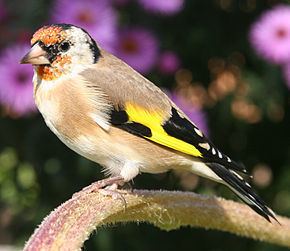Scientific name Carduelinae Phylum Chordata Rank Subfamily | Order Passeriformes Lifespan Atlantic canary: 10 years Higher classification Finch | |
 | ||
Lower classifications Carduelis, European goldfinch, European greenfinch, Grey‑capped greenfinch, Atlantic canary | ||
The cardueline finches are a subfamily, Carduelinae, one of three subfamilies of the finch family Fringillidae, the others being the Fringillinae and the Euphoniinae. The Hawaiian honeycreepers are now included in this subfamily. Cardueline finches are specialised seed eaters, and unlike most passerine birds, they feed their young mostly on seeds, which are regurgitated. Besides this, they differ from the other finches in some minor details of their skull. They are adept at opening seeds and clinging to stems, unlike other granivorous birds, such as sparrows and buntings, which feed mostly on fallen seeds. Some members of this subfamily are further specialised to feed on a particular type of seed, such as cones, in the case of crossbills. Carduelines forage in flocks throughout the year, rather than keeping territories, and males defend their females rather than a territory or nest.
Contents
The name Carduelina[e] for the subfamily was introduced by the Irish zoologist Nicholas Aylward Vigors in 1825. Carduelinae is derived from the Latin name carduelis and the binomial name Carduelis carduelis for a goldfinch, one of the species in the subfamily.
List of genera
The Carduelinae subfamily contains 183 species divided into 49 genera. Of the 183 species, 15 are now extinct; these are the Bonin grosbeak and 14 Hawaiian honeycreepers.
